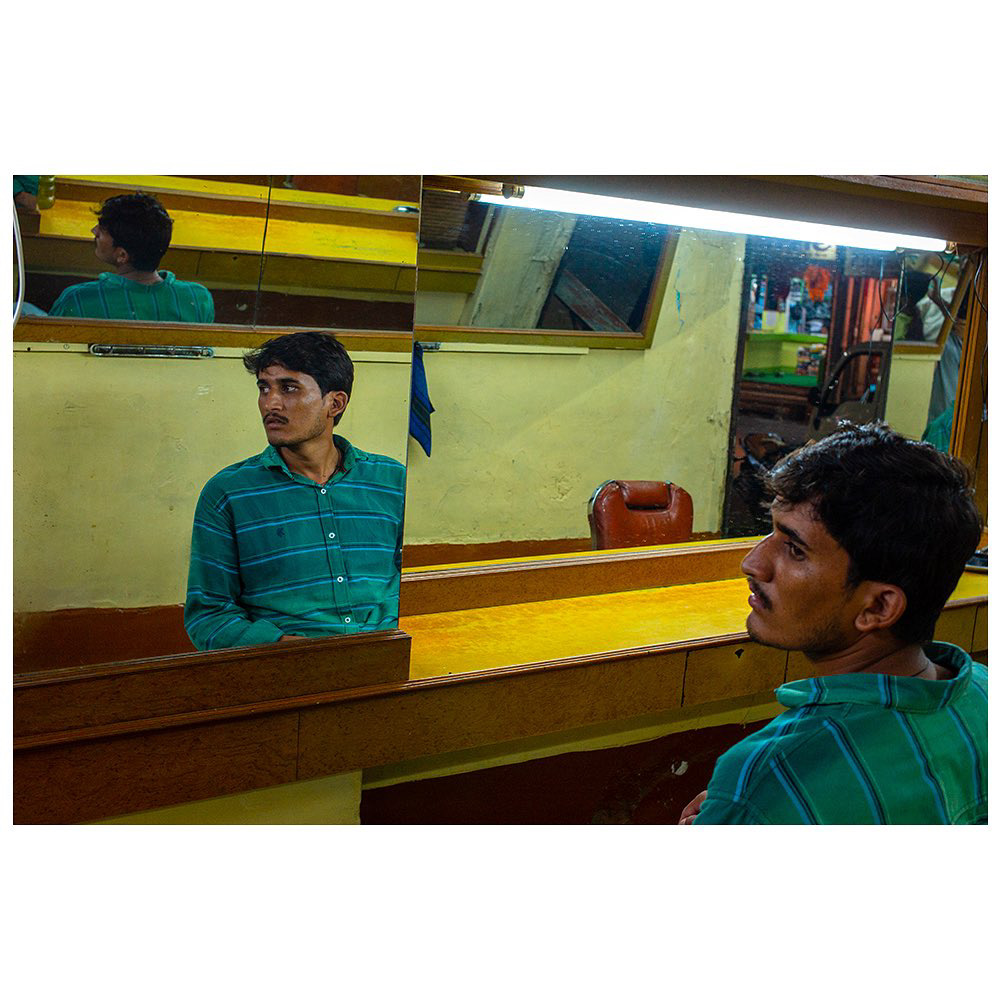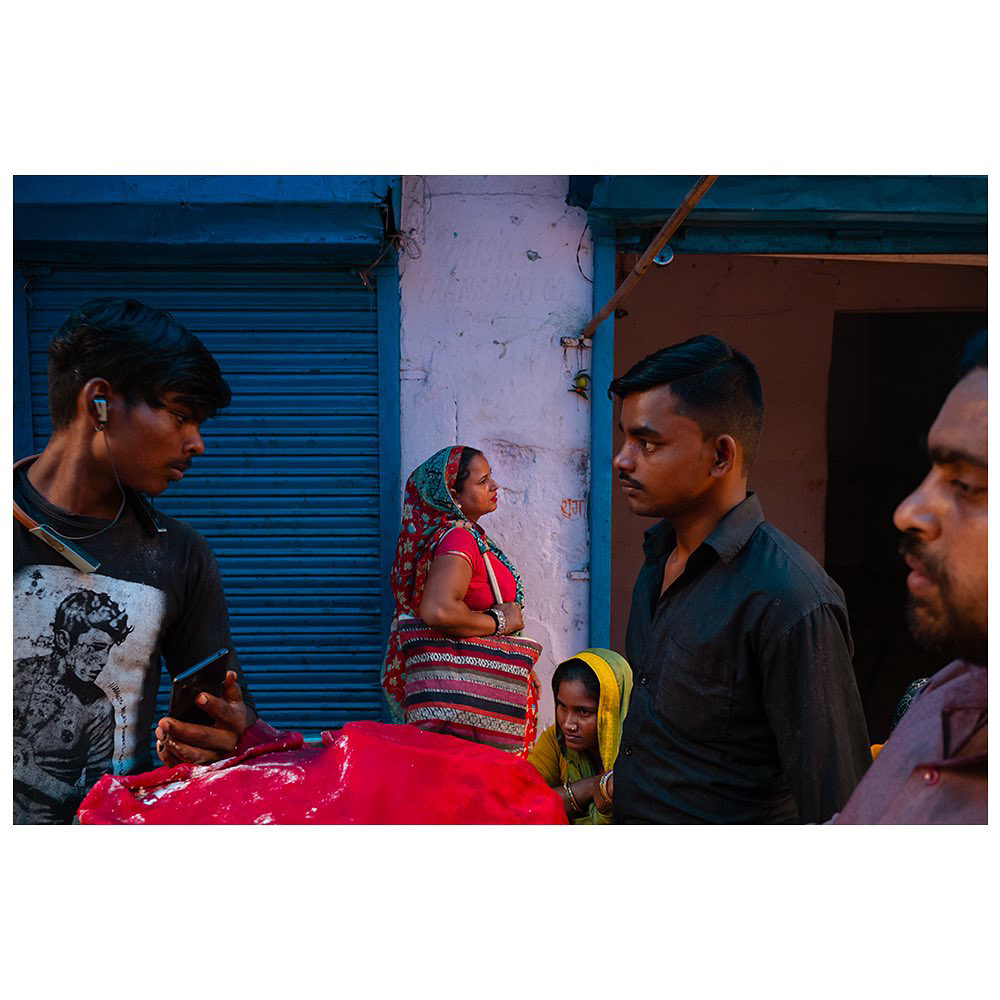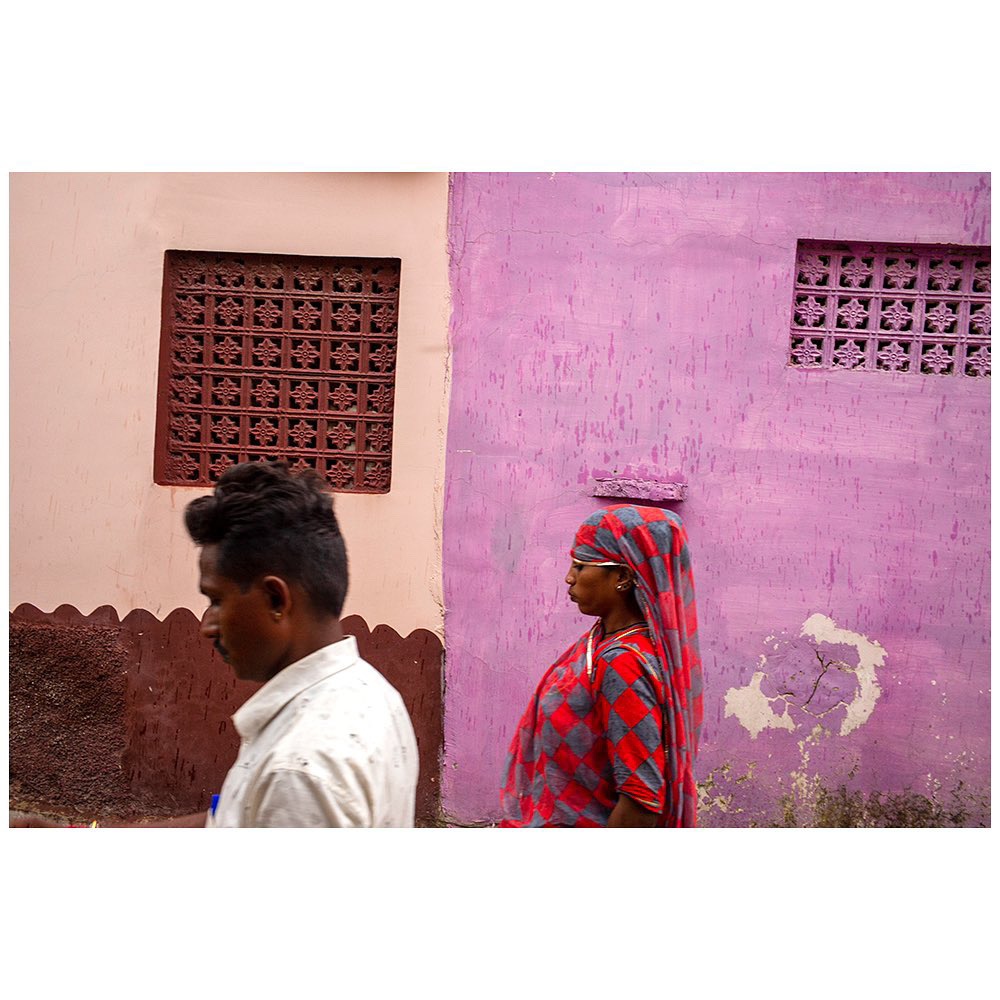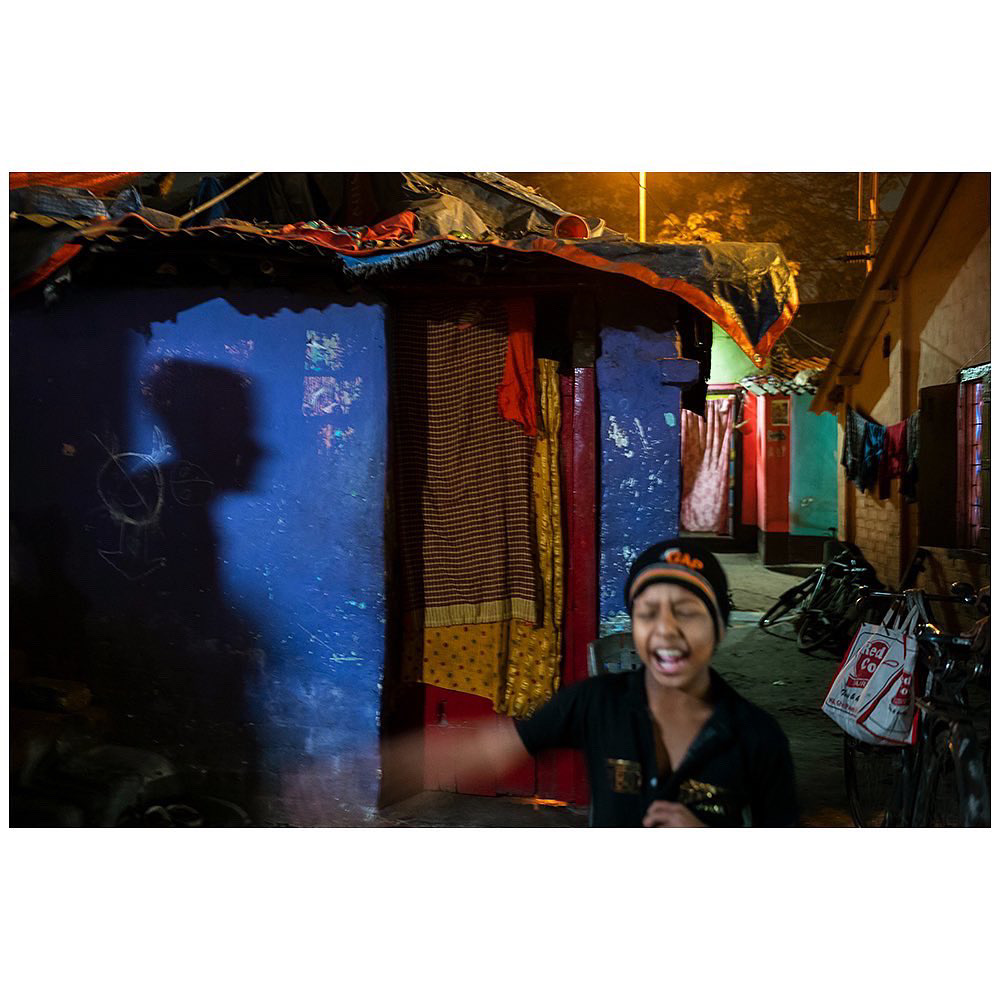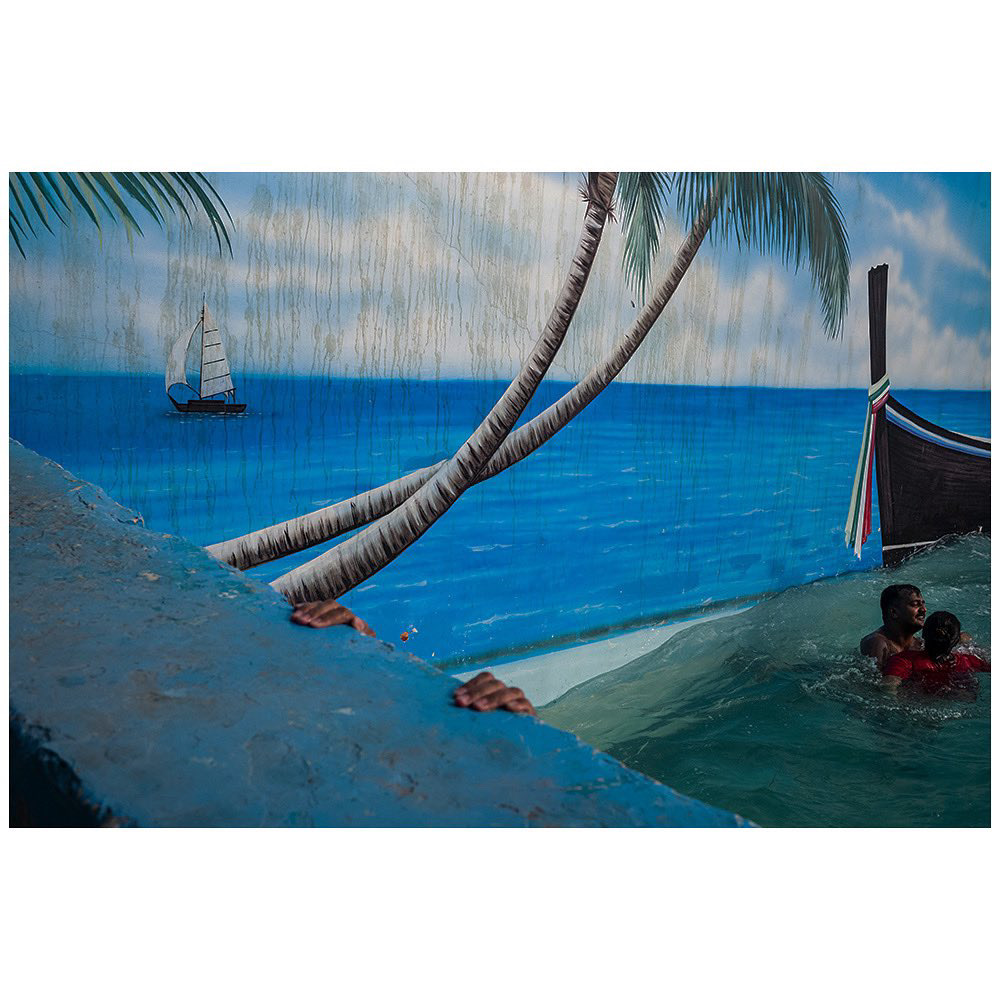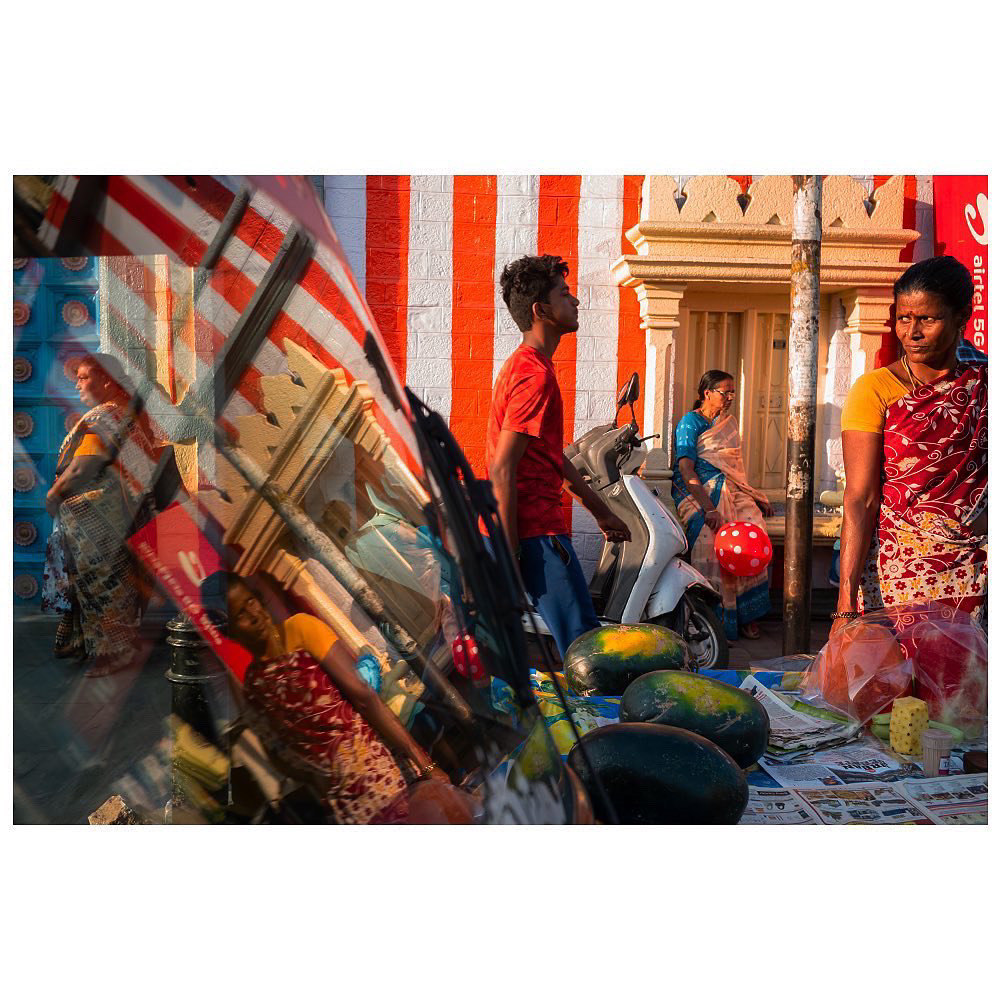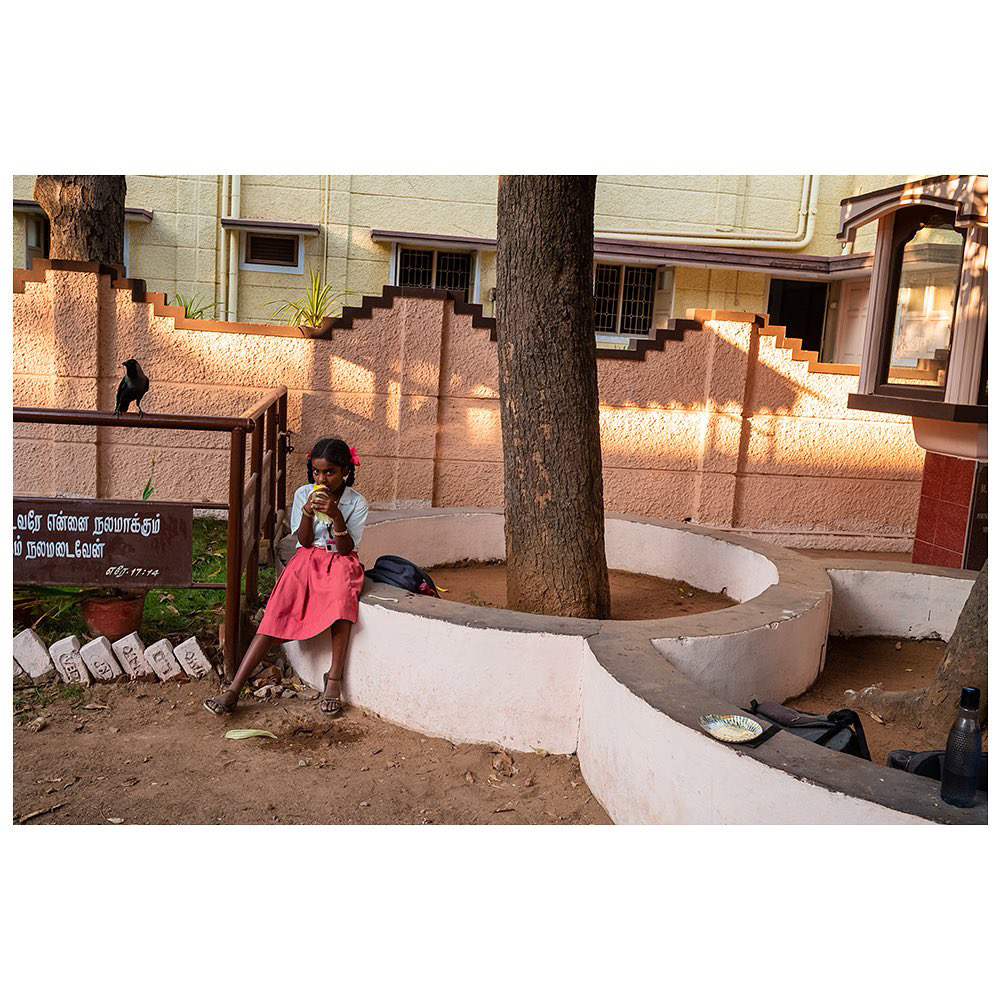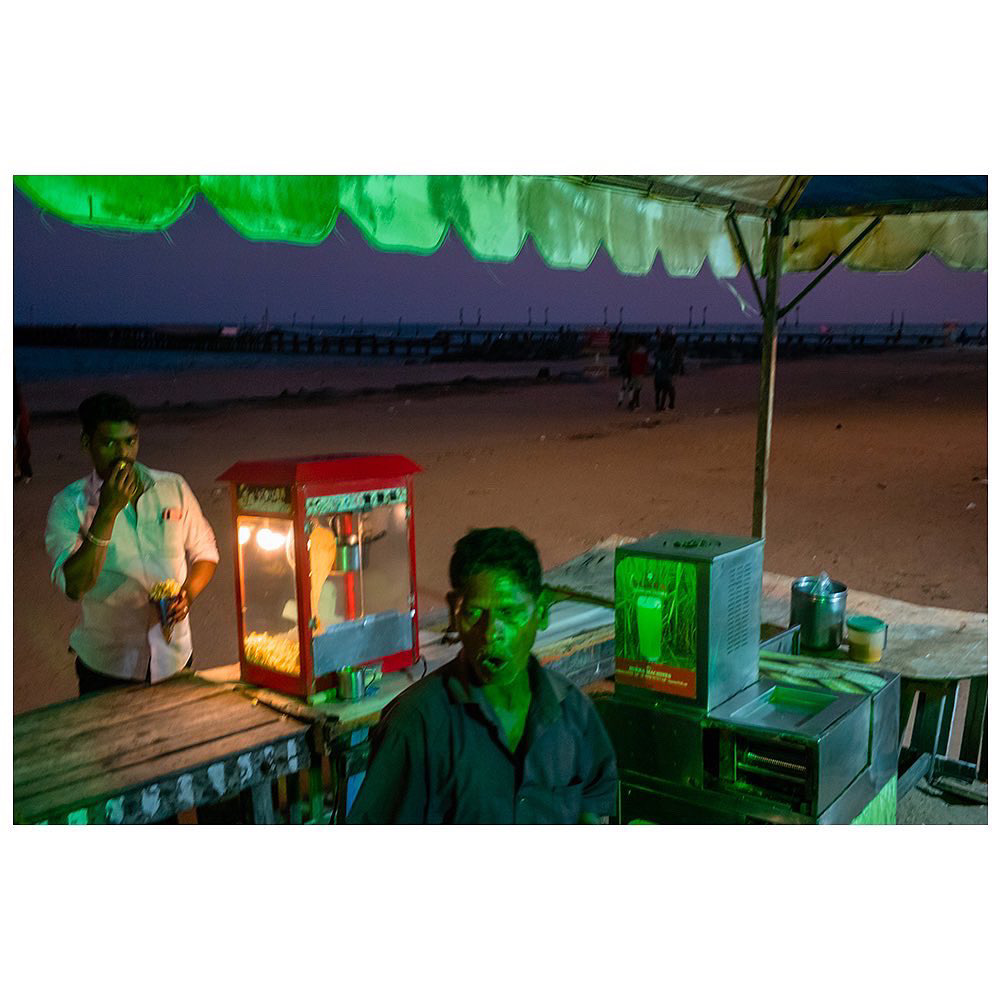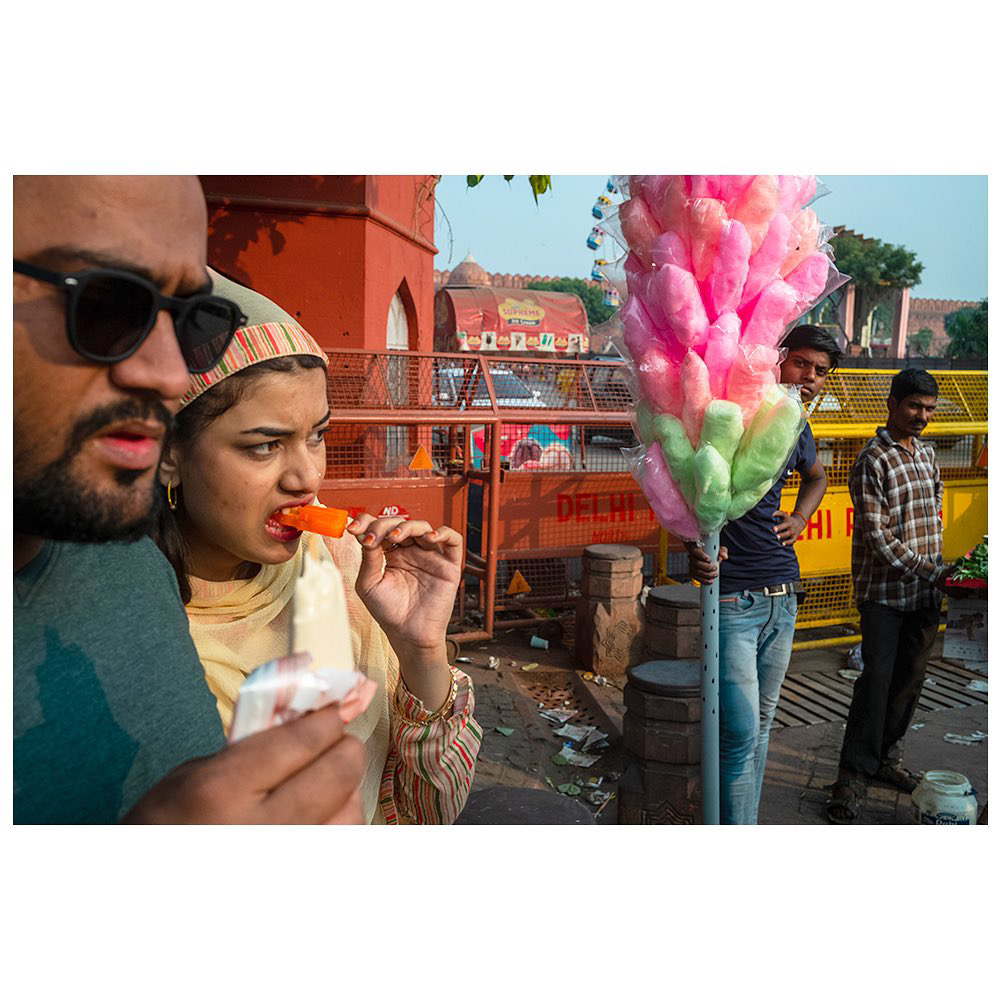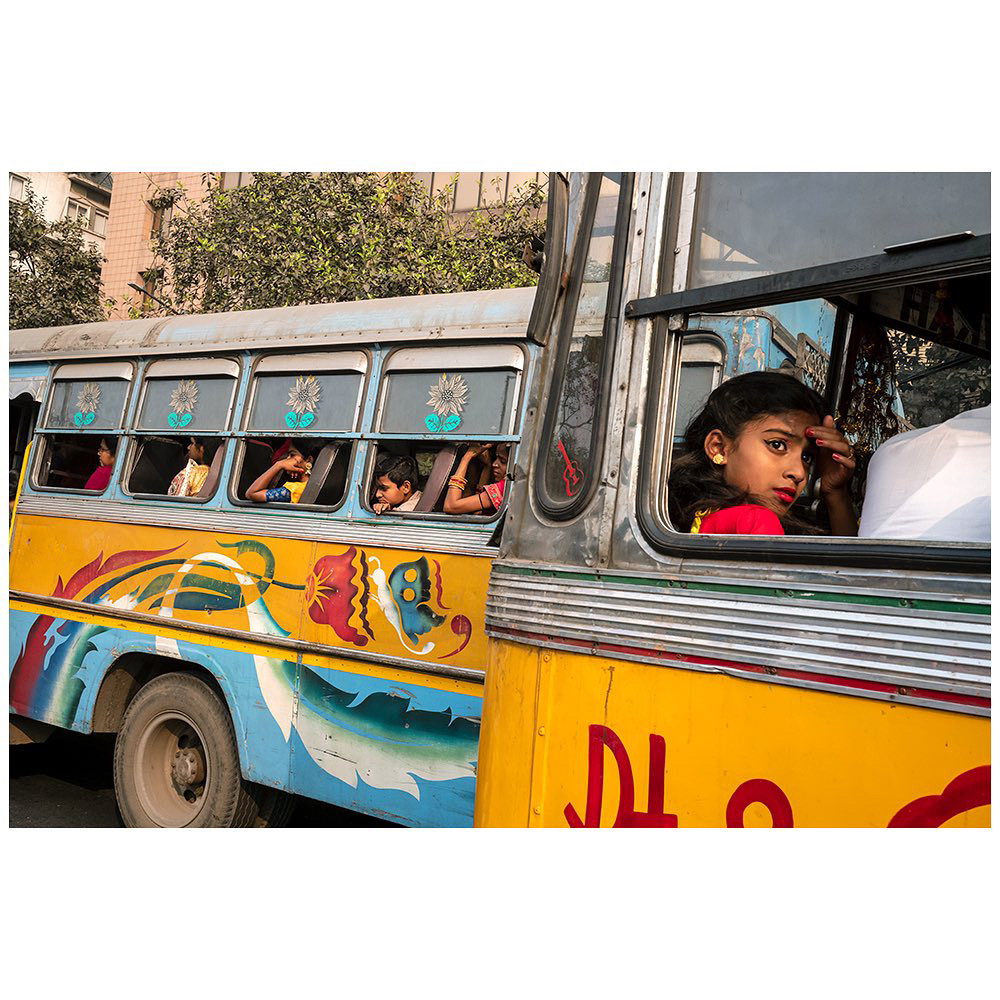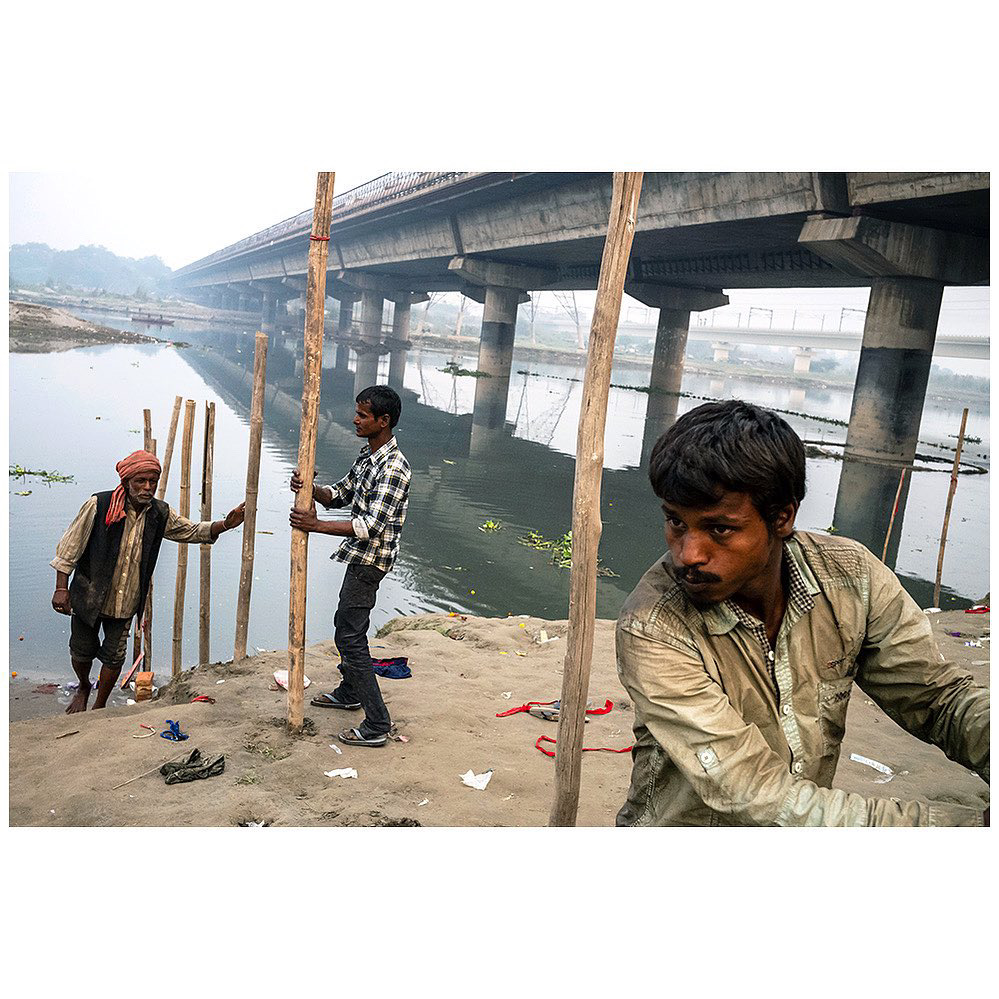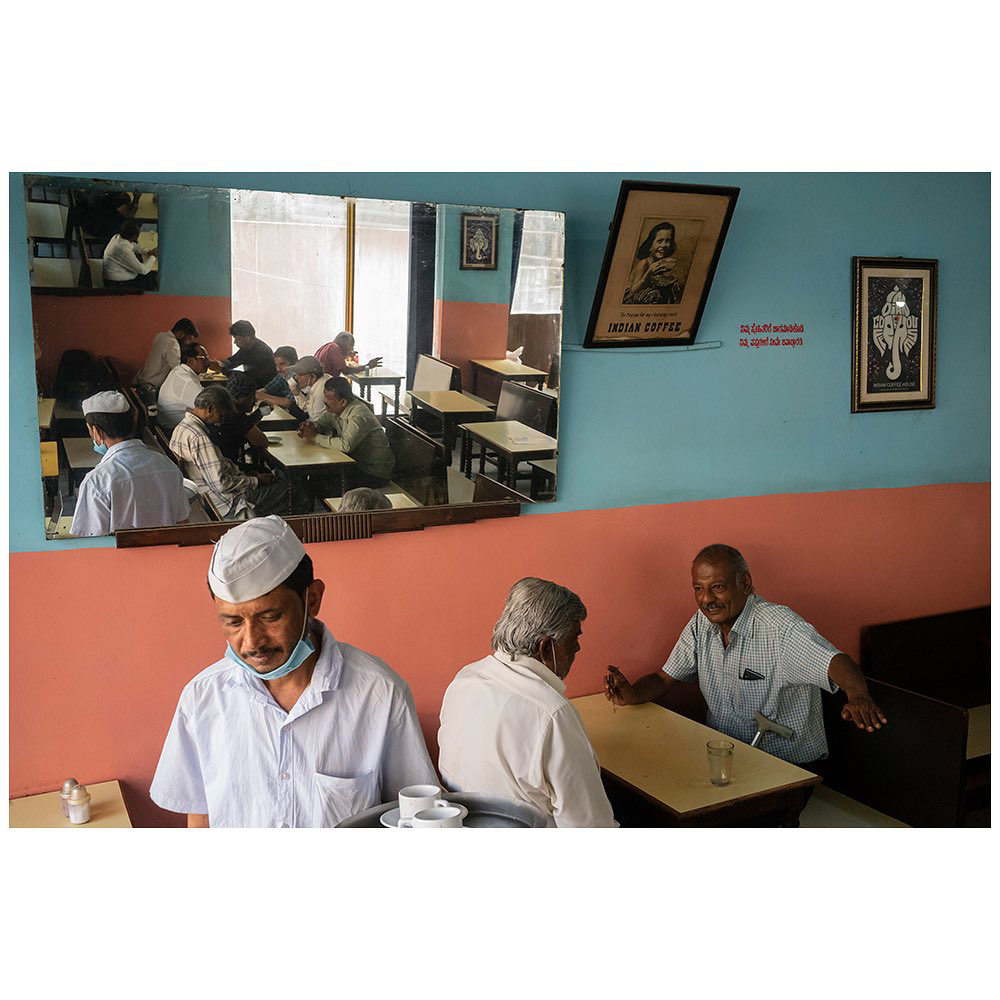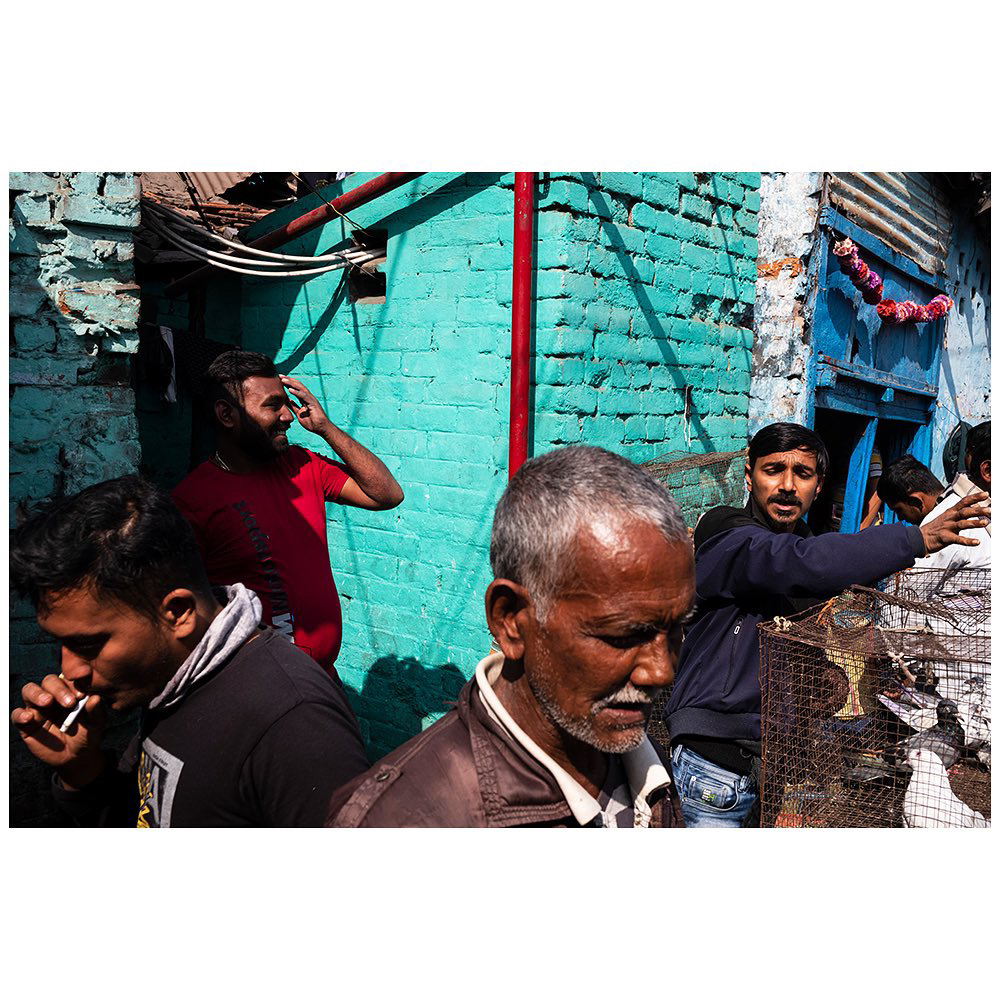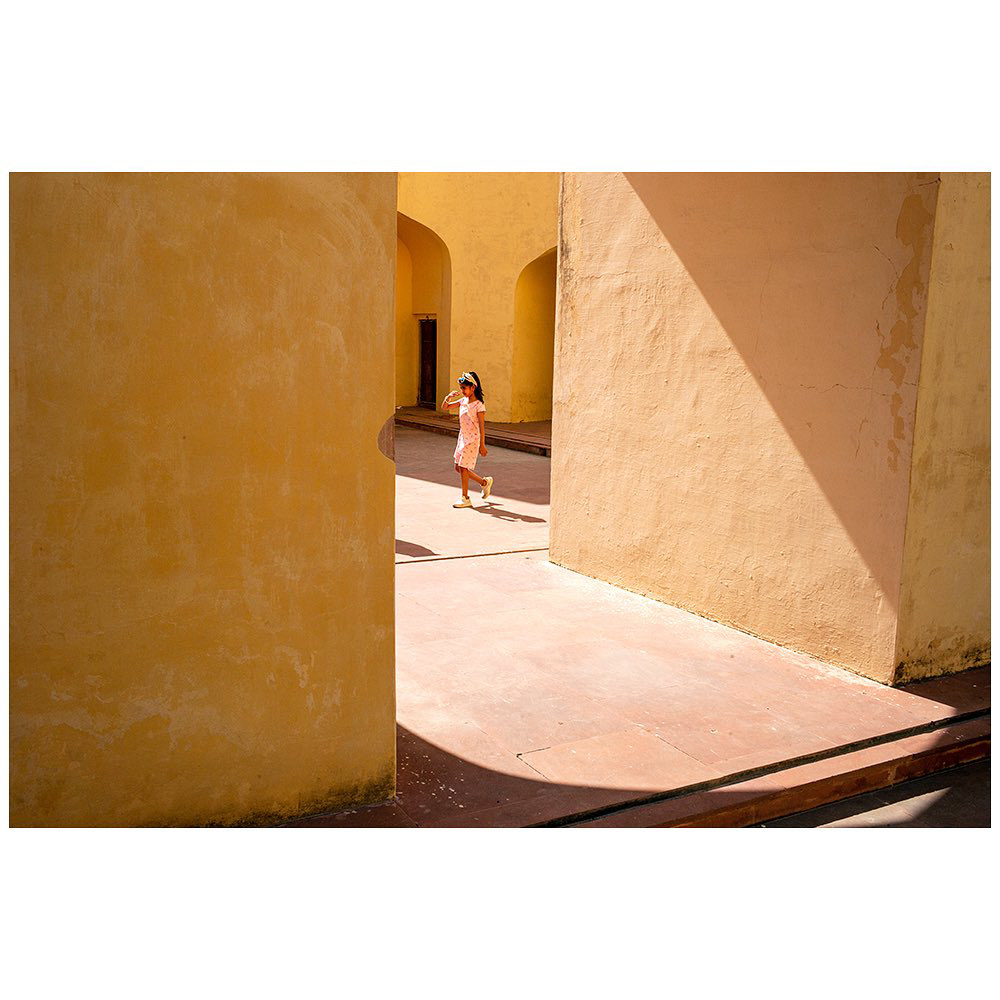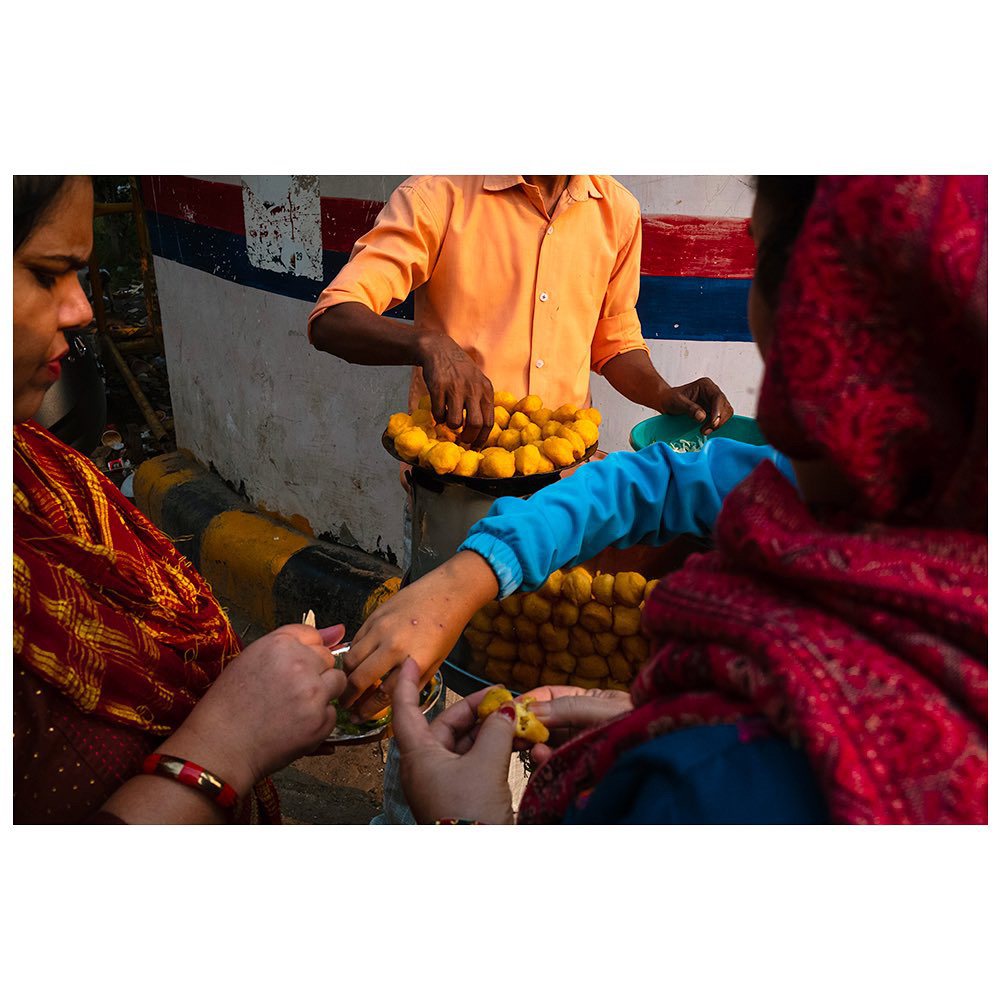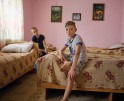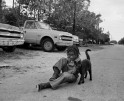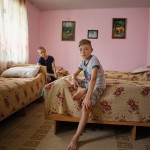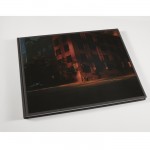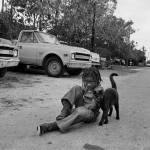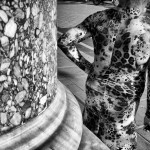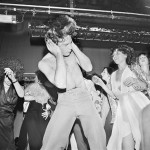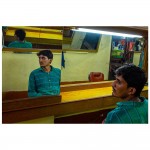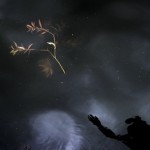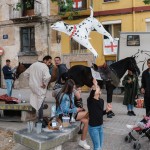European Street Photography Week: Greg Mo: Streets of India
I met Greg Mo while attending an artist talk by Harry Gruyaert of Magnum on Bastille Day in Marseille this summer. He mentioned his keen interest in the work of Gruyaert and informed me that he had just come from Arles where one of his recent books had been featured during the Rencontres events at the photo festival. We exchanged contact information and when I eventually looked at his website, I knew I wanted to feature his work as a European street photographer. Ironically, most of his recent street work takes place in various countries in Asia where Mo has resided for many years. I was initially struck by Mo’s consistent ability to capture decisive moments on the streets of India with an uncanny knack for layering images with perfect timing. The other element that is gripping in these images is the emphasis and playful use of color. The luscious colors combined with the exotic players captured in his frame are a pleasure to behold and to decipher. I can also understand his fascination with the work of Gruyaert, who is a consummate master of color. I continue to be fixated upon Mo’s image of the two hands gripping the wall of a bridge over turbulent water flowing beneath and my imagination runs wild.
Greg Mo is a photographer specializing in street photography in Asia, his complexly framed images play with vivid colors, shadows, and enigmatic shapes. His work evokes the world of dreams, where various protagonists mingle and meet in surreal atmospheres resulting in more questions rather than providing answers.
As I began to communicate with Mo, I soon discovered that I was dealing with a man of mystery. However, I did manage to piece together a few facts about him. He is French, born and raised in Paris, but seems to be a flaneur of the world. He is self- taught as a photographer and learned photography in the streets, reading books, and studying the work of other photographers. He is peripatetic but has established a base of operations in Southeast Asia giving workshops on street photography and doing commercial work for corporate clients. His climate change project related to the Tonle Sap Lake in Cambodia, “Tonle Soap”, was exhibited as part of Arles festival, 2023.
Follow Greg Mo on Instagram: @gregmophoto
Michael Honegger: How did you first become interested in street photography, and what attracted you specifically to capturing moments in India and other parts of Asia?
Greg Mo: I started shooting streets during a six-month sojourn in Asia in 2008. It was a great excuse to discover a new region and to explore in a different way. My practice evolved in a more serious manner during the Covid pandemic. I challenged myself to commit to shooting images on a daily basis for my project Khovid21. While shooting for this project, I tested many different techniques and approaches to discover my own photographic voice.
The project began on the historic date of April 14, 2021, both because it was the Cambodian New Year and the first day of confinement in Phnom Penh, the capital of Cambodia. I chose this significant moment to launch the year-long project to document the streets on a daily basis. My approach was to photograph each day and then select the best photo of the day. The complete series is composed of 365 images.
During this year of daily photography, I tested various styles and approaches, multilayers, games of light and shadow, different tones of colors, and trompe l’oeil. These different stages and research allowed me to know what I was looking for in the streets. The goal was not to report as a journalist, but it was an artistic approach to everyday life during the pandemic. All images contain non-posing individuals, captured on the spot without prior discussion so as not to disturb the scene. Each frame worked on its own and had no series logic other than the theme of time and technique, shooting randomly in the streets. However, all the images convey well the strange period of Covid, and one can detect isolation and fear beneath the layers.
MH: India is a country rich in culture, colors, and diversity. How has this unique blend influenced your approach to street photography?
GM: India is a great country in which to shoot. It is vibrant, dynamic, and curious in so many ways. However, I think capturing India is not as easy as it appears at first. It requires one to select what to shoot without being distracted by the many different things happening simultaneously. In other words, it is a surfeit of riches, and you cannot capture it all.
I don’t want to break the momentum while shooting and I’m trying to be invisible. However, shooting with a Leica requires me to bring the camera to my eye. This approach becomes less sneaky as it is obvious that I’m photographing. There are three typical reactions possible from your subject: acceptance, indifference, or inconvenience. You must always respond in accordance with what people agree to share with you.
MH: Color plays a significant role in your photography. Can you share some insights into your process of incorporating color to evoke emotions and tell stories through your images?
GM: I am instinctively attracted by shapes and lines, but I’m more attracted by color, as it is something I connect with on a deeper level. I naturally think in colors and try to incorporate them into the frame.
MH: Street photography involves capturing candid moments of people. How do you approach your subjects respectfully while still maintaining the authenticity of the moment?
GM: You must try different things and approaches while shooting. You need to react and respond to the flow of events. The more you shoot on the streets, the easier it is to imagine and to predict the reactions of individuals. As I mentioned previously, there are three typical responses: acceptance, indifference, or inconvenience. I rarely get a reaction of anger.
MH: Many of your images employ a layering technique where you manage to incorporate your subjects in multiple planes. How do you manage this process in practice?
GM: When I find an interesting character, I search for other actions occurring simultaneously. I try to place myself in a position where things could intersect at some point. I try to optimize my luck and sometimes magic happens, and it works.
MH: How long do you plan to stay in Asia? What is next on your photographic agenda?
GM: I am based in Cambodia conducting courses in how to photograph the streets through workshops. After a few successful ones in Phnom Penh I’m thinking of expanding my reach to neighboring countries such as Vietnam or Indonesia.
Posts on Lenscratch may not be reproduced without the permission of the Lenscratch staff and the photographer.
Recommended
-
Artists of Türkiye: Erdem VarolMarch 25th, 2024
-
The International Women in Photo Association Awards: Louise Amelie: What Does Migration Mean for those who Stay BehindMarch 12th, 2024
-
Oli Kellett: Cross Road BluesFebruary 25th, 2024
-
Sage Sohier: Passing TimeFebruary 4th, 2024
-
Collective Week: Burn My Eye CollectiveDecember 14th, 2023

